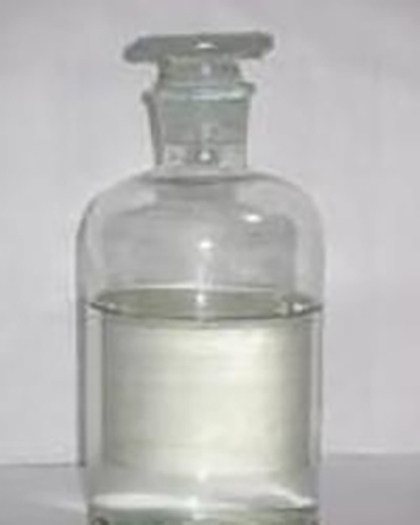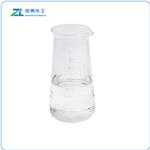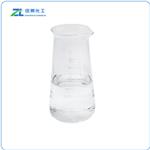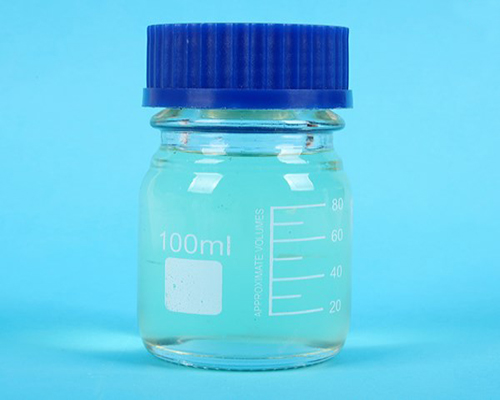Different applications of triethylene glycol
Apr 13,2022
Introduction
Triethylene glycol, also known as triethylene glycol and diethylene glycol, CAS No. 112-27-6, is a colorless viscous liquid with water absorption[1]. Its chemical properties are both alcohol and ether. Triethylene glycol is a colorless, odorless, hygroscopic and viscous liquid with chemical formula of c6h14o4 and molecular weight of 150.17. The melting point of triethylene glycol is - 4.3 ℃. The boiling point of triethylene glycol is 288 ℃. The relative density of triethylene glycol is 1.1254. The refractive index of triethylene glycol is 1.4561. The flash point of triethylene glycol is 165.85 ℃. Triethylene glycol is miscible with water and ethanol, slightly soluble in ether and almost insoluble in petroleum ether. Therefore, it has the properties of alkyl and ether. Triethylene glycol is slightly toxic and has no irritation to eyes and skin.

Picture 1 Triethylene glycol liquid
Characteristics and preparation
Triethylene glycol is miscible in alcohol and benzene, miscible with water, slightly soluble in ether and insoluble in petroleum ether. 40.6g carbon tetrachloride, 20.4g ether, 17.7g tetrachloroethylene and 33.0g toluene can be dissolved in 100ml triethylene glycol. In addition, triethylene glycol can dissolve o-dichlorobenzene, phenol, nitrocellulose, cellulose acetate, dextrin, etc., but can not dissolve petroleum ether, resin and grease. Triethylene glycol can be prepared by the reaction of ethylene oxide and ethylene glycol. It is also a by-product of ethylene oxide hydration to ethylene glycol. Taking triethylene glycol produced in industry as an example, its raw materials are ethylene oxide, oxygen and ethylene. The production process is ethylene oxide hydration to produce ethylene glycol, and the by-product triethylene glycol accounts for about 0.5% - 1%. The refining method is distillation. To obtain high purity triethylene glycol, the commercial product can be dehydrated with anhydrous sodium sulfate and distilled under reduced pressure for 3 times, and the middle fraction can be collected and recrystallized for 2 times.
Application
Triethylene glycol is widely used as an excellent dehydrating agent for natural gas, oilfield associated gas and carbon dioxide; Used as solvent for nitrocellulose, rubber, resin, grease, paint, pesticide, etc; Used as air bactericide; Used as triethylene glycol ester plasticizer for PVC, polyvinyl acetate resin, glass fiber and asbestos pressing board; Used as anti drying agent of tobacco, fiber lubricant and desiccant of natural gas; It is also used in organic synthesis, such as the production of brake oil with high boiling point and good low temperature performance. It can be used in gas chromatography as extractant.
Triethylene glycol is used as solvent, extractant and desiccant. It is also used in printing ink as hygroscopic agent and softener. Triethylene glycol can be used as disinfectant in cleaning agent of air conditioning system
It is a good substitute for diethylene glycol (diethylene glycol), which is more environmentally friendly and safe than diethylene glycol (diethylene glycol). The lipophilic hydrophilic equilibrium value (HLB value) of triethylene glycol is lower than that of diethylene glycol, so it is relatively lipophilic.
Triethylene glycol can be used as solvent for nitrocellulose, various resins, gum, rocket fuel, plasticizer, diesel additive, air dehumidifier, aromatic hydrocarbon extractant, printing ink, softener, moisturizer, disinfectant of air conditioning system, air bactericide, lubricant viscosity improver and aromatic hydrocarbon extractant of reforming liquid.
Triethylene glycol can be used as plasticizer and triethylene glycol lipid plasticizer for polyvinyl chloride, polyvinyl acetate resin, glass fiber, rubber and asbestos pressed board. Triethylene glycol can be used as dehydrating agent and excellent dehydrating agent for natural gas, oilfield associated gas and carbon dioxide. Triethylene glycol can be used for organic synthesis, gas chromatography and organic synthesis. It can be used to produce brake oil with high boiling point and good low temperature performance. Triethylene glycol can be used as desiccant, which is mostly used as tobacco desiccant, fiber lubricant and natural gas desiccant.
Reference
1 Hayyan M, Aissaoui T, Hashim M A, et al. Triethylene glycol based deep eutectic solvents and their physical properties[J]. Journal of the Taiwan Institute of Chemical Engineers, 2015, 50: 24-30.
- Related articles
- Related Qustion
- Triethylene Glycol: Overview, Applications in Air Treatment and Health Hazards May 31, 2024
Triethylene glycol's efficacy in air treatment against viruses warrants expedited regulatory approval for broader deployment in public health.
- The toxicity of Triethylene glycol May 14, 2024
Triethylene glycol (TEG) has been used for natural gas dehydration, as a humectant, solvent, and chemical intermediate in synthesizing resins, plasticizers, lubricants, and polyurethanes.
- The Uses of Triethylene glycol Nov 18, 2022
The passage introduces the uses of Triethylene glycol.
Foscarnet is a broad inhibitor of viral DNA polymerases, including both DNA-dependent and RNA-dependent DNA polymerases (the latter usually called reverse transcriptases).....
Apr 13,2022Antimicrobial agentTriethylene glycol
112-27-6You may like
Triethylene glycol manufacturers
- Triethylene Glycol
-

- $120.00 / 1kg
- 2024-11-15
- CAS:112-27-6
- Min. Order: 1kg
- Purity: 99%
- Supply Ability: 20ton
- Triethylene glycol
-

- $60.00 / 1kg
- 2024-11-15
- CAS:112-27-6
- Min. Order: 1kg
- Purity: 99
- Supply Ability: 5000
- TEG
-

- $60.00 / 1kg
- 2024-11-15
- CAS:112-27-6
- Min. Order: 1kg
- Purity: 99
- Supply Ability: 5000





